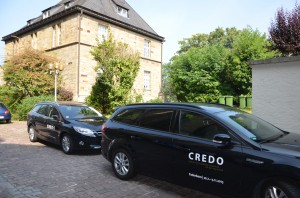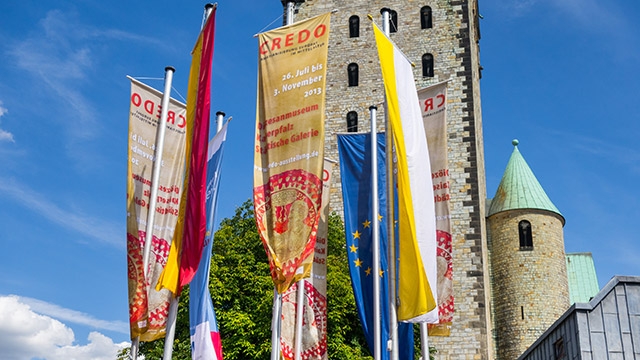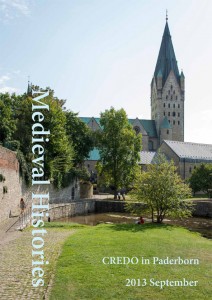Paderborn has great success with branding itself through a series of exhibitions showing medieval art and history
Emotions, memories and morality – all should according to the director of the Diocesan Museum, Christoph Stiegemann, be evoked in the visitor to a historical exhibition. Since 1999, when Paderborn first entered the international scene of museum blockbusters, the aim has been exactly this: to inspire visitors to engage with not only the “past as a foreign country”, but also the moral choices, which were involved in its unfolding, as well as the emotional dilemmas posed by these choices. By stressing these dimensions the curators have wished to make the histories of past events emotionally and morally pertinent to our present time. In this sense any museum changes into a theatrical scene.
To some extent this ambition has been successful. Today Paderborn is branded as a place where huge and vastly interesting medieval exhibitions are mounted in state-of-the-art surroundings – the Diocesan Museum and the reconstructed Ottonian palace just behind the Cathedral. Known to be well curated and researched, some of the most precious objects in international collections have consistently been made available as loans to these exhibitions, raising the expectations of any visitor; even those armed with only a slight foreknowledge will obviously be able to derive pleasure from this ver well curated exhibition.
However, starting with the exhibition “Charlemagne 799”, which was seen by 311.287 visitors, the number to the Canossa exhibition fell to a 190.000. According to the organisers of the present exhibition (CREDO 2013), 150.000 visitors are expected. Part of this reflects a widened supply. During 1991 – 2009 the number of museums in Germany grew by 48% while the number of visits to cultural museums grew only by 16%.

But part of the development probably also reflects the choice of themes. While Charlemagne is well known amongst a wider audience due to his emblematic status in the EU, the German emperor Henry IV and his controversies with pope Gregory VII, which ended in the barefooted penance in the snowy mountains at Canossa, definitely had less appeal.
Thus, there is no doubt that the blockbuster exhibitions in Paderborn as elsewhere are risky business. Other huge exhibition ventures like the three Otto-exhibitions in Magdeburg have felt the same declining lack of interest. In 2001 the first exhibition could muster 300.000 visitors. The last exhibition in 2012 did not reach even the 100.000 benchmark.
So far, however, the organisers in Paderborn have been satisfied with the performance of CREDO 2013. Even though the exact number of visitors has as yet not been made available, the press office tells us that the exhibition has gone off to a flying start compared to the Canossa exhibition in 2006. More significant is the fact that visitors are pouring in from not only the local region, but from all of Germany as well as Benelux, France and Eastern Europe.
The theme of the CREDO exhibition – what we believe and how we all became Christians in view of the combined missionary effort of Churches and Emperors – seems to have hit a raw nerve in the 21st century characterised by the re-emergence of religious fervour amongst a growing segment of fundamentalists.
The Economy
Added to these reflections it is perhaps also worth mentioning the sound investment such an exhibition might be. Compared to the latest Otto-exhibition in Magdeburg, which had a budget of €3mill, the current exhibition in Paderborn operates within a budget of €7 mill. With a projected number of visitors: 150.000 and after subtracting the highest possible income from the teller, the expense is app. €5mill, most of which have been paid by the city of Paderborn and the The Westphalia-Lippe Regional Association (LWL); all in all this may in a worst case scenario amount to a “gift” to every visitor of app. €33.
Does this make sense? Yes, the organisers claim that any boost to the business of tourism is worth every Euro. In 2009 270.000 visited the region of Paderborn. This generated a turnover of €78 Mill or the equivalent of €288 per traveller. With just a minor growth – 5-6 % or 15-20.000 – in the number of visitors to the city, the €5 mill would surely be recouped in the form of local business, jobs etc. In this crude estimate the fact that cultural travellers are known to spend more freely, when travelling, has not been taken into account.
READ MORE:
MEDIEVAL HISTORIES, September 2013 – special issue about Paderborn and the exhibition CREDO

